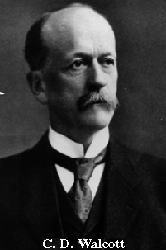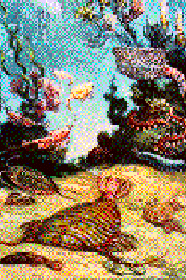The Nature of Evolution: Making the Evidence Fit the Story


Walcott, the discoverer of the Burgess Shale, described the creatures
he found as if they were unexceptional ancestral forms of later day arthropods,
echinoderms and worms, as pictured in Charles Knight's portrait of the fauna
on the right.
By Walcott's time (he discovered the Burgess Shale in 1909) more ground
had been covered, literally speaking, and still no ancestral trilobites
or small shelly fauna had been found.
To explain the apparent abruptness of the appearance of life in the Cambrian,
Walcott posited the "Lipalian interval", a time for which the
sedimentary record was either not deposited or had been eroded away. In
fact, sections of sediments from the Precambrian/Cambrian boundary were
hard to find. The Cambrian sediments often rested on crystalline basement
rock.
Walcott shored up the established views of evolution by overlooking the
uniqueness of the Burgess shale animals and helped patch over a bare spot
in the fabic of accepted opinion with his "Lipalian interval".
Walcott photo from the Burgess Shale Exhibit, Hooper Museum.
Painting by Charles Knight from cover of Wonderful Life.

